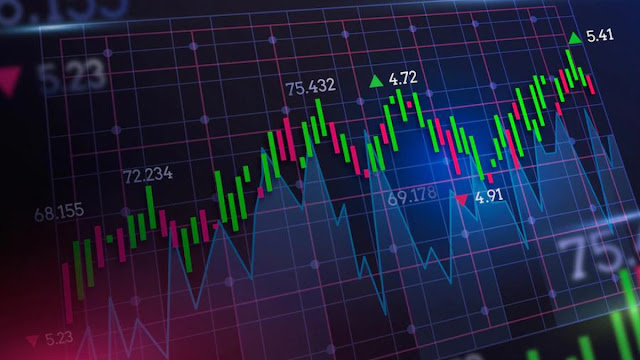What is Crypto and Forex Trading? Understanding the Differences and Similarities
Introduction
Crypto and forex trading have gained significant popularity as investment options in recent years. Both involve trading currencies, but there are key differences between the two. In this article, we will explore the similarities and differences between crypto and forex trading, highlighting their unique characteristics and potential risks.
Understanding Crypto Trading
The Growth of Cryptocurrency Market
Cryptocurrency trading involves buying and selling digital currencies, such as Bitcoin and Ethereum. The cryptocurrency market has experienced rapid growth in recent years. This growth can be attributed to factors like increasing acceptance by businesses and consumers, as well as the belief that cryptocurrencies can act as a hedge against inflation.
Volatility and Opportunities
Crypto trading is known for its high volatility, meaning prices can fluctuate rapidly. This volatility creates opportunities for traders to profit, but it also carries the risk of substantial losses. Traders must carefully analyze market trends and make informed decisions to navigate this volatile environment successfully.
Global Market Accessibility
Similar to forex trading, crypto trading operates as a global market. Traders can participate from anywhere in the world, given the decentralized nature of cryptocurrencies. This accessibility allows individuals to engage in crypto trading regardless of their geographic location.
Digital Currency as the Underlying Asset
In crypto trading, the underlying asset is a digital currency. Traders speculate on the price movements of these currencies, aiming to buy at low prices and sell at high prices. The unique characteristic of digital currencies influences the dynamics of price fluctuations in the crypto market.
Regulation and Risk
Compared to the forex market, the cryptocurrency market is relatively less regulated. The absence of extensive regulations poses additional risks for crypto traders. It is crucial for traders to conduct thorough research, choose reputable exchanges, and stay informed about legal and regulatory developments in their jurisdictions.
Trading Hours
The cryptocurrency market operates 24 hours a day, 7 days a week. This continuous trading schedule offers flexibility to traders. However, it can also be challenging to track the market around the clock, especially when considering other commitments or trading in other markets simultaneously.
Understanding Forex Trading
The Forex Market Overview
Forex trading involves buying and selling currencies. It is the largest and most liquid financial market globally, with an estimated daily trading volume exceeding $5 trillion. The forex market provides a platform for individuals, institutions, and governments to exchange currencies.
Market Size and Liquidity
The forex market's vast size and high liquidity contribute to its popularity. Traders can execute trades swiftly and with minimal price slippage due to the market's depth. This liquidity also means that traders have the flexibility to enter and exit positions effectively.
Accessibility and Global Trading
Similar to crypto trading, forex trading is accessible to traders worldwide. The decentralized nature of the forex market allows participants to trade currencies from different countries, facilitating global market engagement.
Currency as the Underlying Asset
Unlike crypto trading, where digital currencies are the underlying assets, forex trading involves trading currency pairs. Traders speculate on the exchange rate fluctuations between two currencies, simultaneously buying one currency while selling another.
Regulation and Risk
Forex trading is subject to regulatory oversight in many countries. Regulated brokers ensure compliance with financial regulations, offering traders a certain level of protection. However, it's essential for traders to conduct due diligence and choose regulated brokers to mitigate potential risks.
Trading Hours
The forex market operates 24 hours a day, 5 days a week. Its trading hours align with the business hours of major financial centers worldwide. This continuous but limited trading schedule enables traders to plan their activities and execute trades at specific times.
Key Differences Between Crypto and Forex Trading
Underlying Asset
The primary difference between crypto and forex trading lies in the underlying asset. Crypto trading involves digital currencies, while forex trading involves trading pairs of fiat currencies. This distinction influences the factors that drive price movements in each market.
Level of Regulation
Crypto trading operates in a relatively less regulated environment compared to forex trading. Regulatory oversight in the forex market provides traders with a certain level of security and accountability. Crypto traders must be cautious and stay updated on legal requirements in their respective jurisdictions.
Trading Hours
While both markets offer 24/7 trading, there is a slight difference in their trading hours. Forex trading is available 24 hours a day, 5 days a week, aligning with the business hours of major financial centers. Crypto trading, on the other hand, operates continuously throughout the week, including weekends.
Tips for Trading Crypto and Forex
To navigate the world of crypto and forex trading successfully, consider the following tips:
- Start Small: Begin your trading journey by investing a small portion of your capital. This approach allows you to gain experience, learn from potential mistakes, and minimize financial risks.
- Do Your Research: Thoroughly understand the markets and the assets you are trading. Stay updated with market news, industry trends, and technological advancements. Conduct technical and fundamental analysis to make informed trading decisions.
- Use a Reputable Broker: Choose a reputable broker that offers a secure trading environment, robust trading platforms, and essential tools and resources. A reliable broker can help you execute trades effectively and provide support when needed.
- Stick to Your Trading Plan: Develop a well-defined trading plan and follow it consistently. Set clear goals, determine your risk tolerance, and establish entry and exit strategies. Emotional decisions can lead to impulsive trading and potential losses.
- Take Breaks: Trading requires focus and mental clarity. Take breaks when needed to avoid fatigue and burnout. Trading while tired or emotional can impair judgment and lead to poor decision-making.
- Get Help if Needed: Utilize available resources to expand your knowledge and seek guidance if required. Online educational materials, forums, and communities can provide valuable insights and support from experienced traders.
The Future of Crypto and Forex Trading
The landscape of crypto and forex trading is continuously evolving. As technology advances and market dynamics change, new opportunities and challenges emerge. Here are a few developments to watch for in the future:
Increased Regulation
The cryptocurrency market has been gradually gaining regulatory attention as governments and financial authorities recognize the need to protect investors and ensure market stability. As the industry matures, we can expect more regulations to be implemented, potentially bringing greater transparency and investor confidence to the crypto market.
Integration of Cryptocurrencies into Forex Trading
With the growing popularity and acceptance of cryptocurrencies, there is a possibility of increased integration between crypto and forex markets. Some forex brokers have already started offering cryptocurrency trading pairs alongside traditional fiat currency pairs. This trend may continue as cryptocurrencies become more main stream.
Advancements in Trading Technology
Technological advancements, such as artificial intelligence (AI) and machine learning, are shaping the future of trading. These technologies have the potential to automate trading strategies, provide sophisticated data analysis, and improve overall trading efficiency. Traders can leverage these advancements to gain a competitive edge in both crypto and forex markets.
Emerging Cryptocurrencies and Forex Pairs
As the crypto market expands, new cryptocurrencies are being introduced, offering alternative investment opportunities. Similarly, the forex market may witness the addition of new currency pairs as global economic landscapes evolve. Traders should stay informed about emerging cryptocurrencies and forex pairs to identify potential investment prospects.
Conclusion
Crypto and forex trading present lucrative opportunities for traders, but they also involve risks. Understanding the differences between these markets is essential for making informed decisions. Both markets require diligent research, risk management, and adherence to trading strategies. By employing sound trading principles and staying updated with market developments, traders can increase their chances of success.

FAQs
Q1. Is crypto trading riskier than forex trading?
A1. Both crypto and forex trading carry inherent risks. Crypto trading is known for its high volatility, which can lead to substantial gains or losses. Forex trading, although generally less volatile, still involves risks due to economic and geopolitical factors. Proper risk management is crucial in both markets.
Q2. Can I trade both crypto and forex simultaneously?
A2. Yes, it is possible to trade both crypto and forex simultaneously. However, it requires careful monitoring and managing of positions in different markets. Traders need to be aware of the different trading hours, liquidity, and risk factors associated with each market.
Q3. Are there any regulatory bodies overseeing crypto trading?
A3. Regulatory oversight of the cryptocurrency market varies across jurisdictions. Some countries have implemented regulations, while others are still developing their frameworks. It is essential for traders to research and comply with the legal requirements and regulations in their respective regions.
Q4. Which market offers higher potential returns?
A4. Both crypto and forex markets offer the potential for high returns. However, the returns depend on various factors such as market conditions, trading strategies, risk management, and individual trader skills. It is crucial to understand that higher potential returns also come with higher risks.
Q5. How can I manage the risks associated with crypto and forex trading?
A5. To manage risks effectively, traders should implement risk management strategies such as setting stop-loss orders, diversifying their portfolios, and avoiding emotional decision-making. Additionally, staying informed about market trends, conducting thorough research, and learning from experienced traders can contribute to effective risk management.
Q6. Is leverage available in crypto and forex trading?
A6. Yes, leverage is commonly used in both crypto and forex trading. It allows traders to control larger positions with a smaller amount of capital. However, leverage can amplify both profits and losses, so it should be used with caution and proper risk management.
















